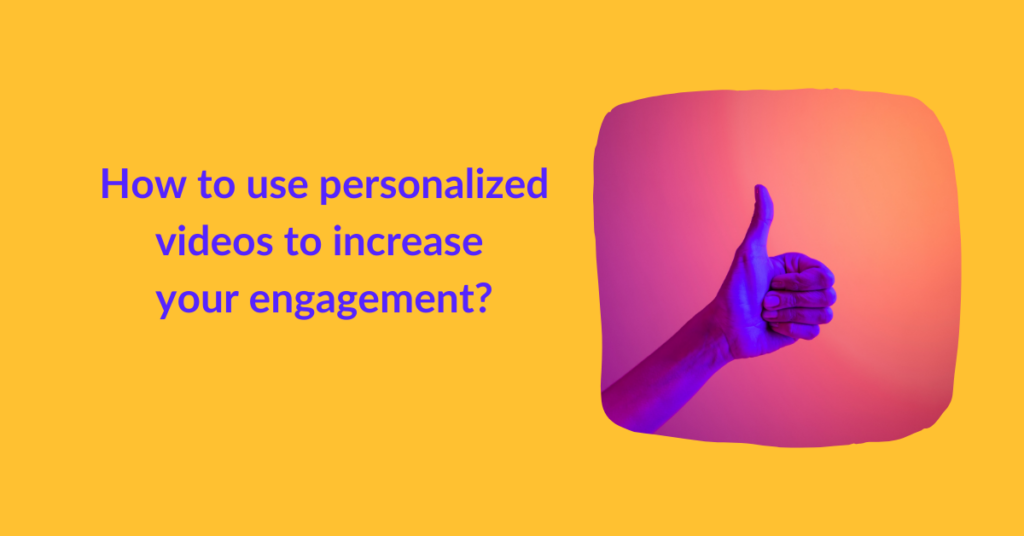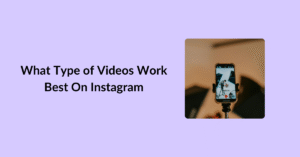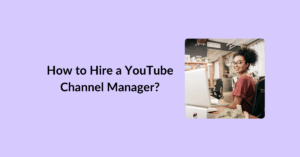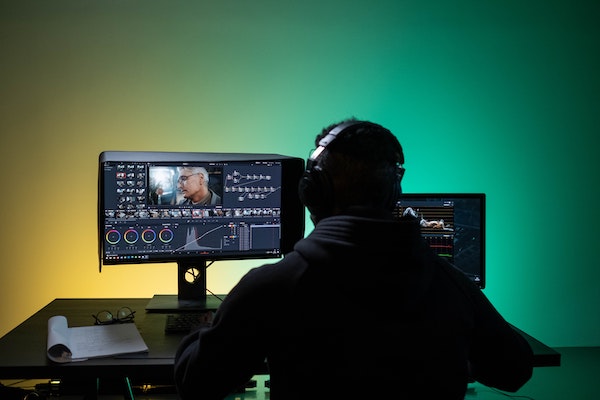You – This is a powerful word in the marketing industry. It makes your audience feel like you are talking specifically to them.
It establishes a direct relationship with your audience, makes them feel acknowledged, and helps you get their attention.
And this is exactly why personalized videos are phenomenally important for your marketing strategy.
These videos are typically the future of video marketing. A survey back in 2020 reported:
- 93% of people were annoyed by irrelevant messaging.
- 81% of people want brands to get to know them better and understand when to approach them.
- Brands reported an 8x improvement in click-through rate with a personalized video compared to a standard outbound email campaign.
Now that speaks volumes about the need and impact of personalized videos.
So, here in this post, we’ll have a detailed look at the concept of personalized video marketing. We’ll go through some awesome examples. And we’ll also provide a complete step-by-step guide on how to create flawless personalized videos that drive incredible results.
Table of Contents
What is a personalized video?
Fundamentally, a personalized video refers to any filmed content that’s specific to the recipient. You talk to them directly by:
- Using their name
- Discussing their problem
- Proposing a solution specific to them
The question arises: how and where do you get this data? Plus, how will you communicate with the recipient of the video without making it seem awkward?
Well, you’ll get all this data with a bit of research that we’ll teach you how to conduct in the later sections of this article. And you’ll communicate it via social platforms, where you first interacted with them. As for keeping it natural and eliminating awkwardness, we’ll guide you on how to do that too (later in the post!).
For now, you need to know there are five types of personalized videos. These include:
Sales Demo Videos
These videos demonstrate how your product or service works and how your potential clients can benefit from it. Its purpose is to initiate sales. When creating personalized sales demo videos, we focus on keeping the usage mechanism and benefits specific to the viewer.
Say you’re creating a sales video for Canva, and you’re trying to sell to a LinkedIn expert. You can talk about LinkedIn templates that Canva offers and how they can make their life easier.
Thank You Videos
It feels nice to receive a thank-you note specifically for you. Doesn’t it? Then, why create standardised thank you videos for your clientele?
In a personalized thank you video, you thank the user with their name with reference to your particular interaction with them. Be it subscribed, viewed, shared, etc.
Explainer Videos
By far, explainer videos are the most common type of videos. These videos explain how your product works in general. Note that these videos are different from sales demo videos.
Explainer videos work best for a top-of-the-funnel strategy wherein you introduce the concept of your business to your potential clients. On the contrary, sales demo videos close sales.
You can create personalized explainer videos to give a 1:1 introduction to your prospects regarding the mechanism and functionality of your product.
Case Study Videos
Personalized case studies are an excellent way to convert. You can record a video about their specific case and tell them which features of your product/service can help them do better and how. Alternatively, you can share a successful case study, wherein you can refer to their particular case now and then. You can compare and suggest.
Event Invite Videos
Evident from the name, these are the videos wherein you send out a super personalized invite to your audience. Keep it highly relevant to the recipient by:
- Referring to their name
- Date and time as per their time zone
- Prerequisites for them
- Benefits for them
Here’s How to Create Flawless Personalized Videos to Boost Engagement
Now, note that investing yourself in a personalized video is useless unless you’re investing yourself thoroughly. Unlike standard marketing videos, you cannot leave room for uncertainty; it may or may not work. Realize that you’re sending out a super-specific message. It should drive response immediately. Be it positive or negative.
So, below we’ve listed 7-steps that will serve both as a guide and checklist for you as you create personalized video content.
Step 1: Choose Type of Personalized Video
Above, we’ve listed the types of personalized videos. Choose one type. You’ll be planning your personalized video marketing strategy around it.
Step 2: Develop Your Purpose
Next, develop the purpose of your campaign by defining your goals. List down the expected end-product(s) of this campaign. For example, you can expect 5% of your potential clientele to convert.
Along with your business targets, also list down how do you wish to help your potential clientele. For example, if you have a video editing tool, your goals for your prospects can look like this:
- Save their time.
- Polish their media to perfection
- Transform ordinary-looking content into attention-grabbing content
Step 3: Gather Your Viewer’s Data
Steps one and two will give you a lead about the data you’ve to collect. Generally, the following details are required to create a personalized video:
- Name
- Geographic Location (Usually country + city)
- Visitor Frequency
- Device
- Referring URL
- Time of Visit
- Search Keywords
- Customer History
- Sessions Behavior
You may not require all of this data depending on the type and purpose of your video. For example, if you’re creating a personalized Thank You video, you will only need to know the name, customer history, and session behavior to thank them. You may use data about their search keywords to guide them more about your tool/service at the end of your Thank You video.
Step 4: Write a Script
Using the collected data, write a video script frame by frame. Ideally, a personalized video should be no longer than 90 seconds. At times, this length is too short for conveying your message. Hence, you can extend it up to two minutes. But if it’s longer than that, chances are the recipient will not watch the whole video. So, plan the script in frames of 10 seconds each, approximately 9-12 frames.
For maximum engagement, keep it as short as possible.
Also, for each frame, you should know the props, settings, and the people involved. If you opt for a screen recording or an animated video, prepare what your screen will do in every frame, including colors, fonts, message, movement, etc. Being specific will take time, but trust us. It will be worth it!
Step 5: Film the Video
You’re all set to record the video now. Make sure you’ve all the basic videography equipment.
Record it once, and it’s great if it turns out good in one go. But if you’re filming for the first time, you’ll likely have to give it multiple tries.
We recommend recording a selfie-style video. It’s easy to record and re-record. Just make sure you record in broad daylight and have a noise-cancellation mic or software.
Tip: Your viewer is more likely to listen intently if they feel someone important is talking specifically to them. So, try making your videos a bit more professional. Here’s a list of hacks on how you can do that.
Step 6: Edit the Video
Once filmed, edit the video to perfection. Note that no one’s going to watch your video if the visuals or audio are disturbing.
Ensure that:
- Transitions are smooth
- The audio is clear and appropriate
- Subtitles are included.
- Your message is direct.
Again, if you’re new to the video-making world, video editing will be anything but a piece of cake for you. You’ll need professional assistance with video editing. Be it via a service provider or a tool.
Based on our extensive experience in helping content creators and business owners, we recommend video editing services over video editing tools (especially when you’re creating personalized videos!).
Why? Well, that’s because video editing services like those offered by our platform, tailor your video content as per your brand persona and bring about better customization. Video editing tools will only land you generic results unless you’re very creative with your combination of fonts, filters, transitions, and other video editing elements.
With that said, here’s a list of the best video editing services. Pick one that fits your taste and budget!
Step 7: Choose a Suitable Marketing Channel.
Lastly, choose the right channel to market your personalized video. This is where you’ll need a marketing expert or SEO expert’s advice. You can share it with your prospect via LinkedIn direct message, email, Instagram, or your website if you offer account creation and user portal.
If you’ve been tracking your engagement analytics, you can determine the right platform yourself too.
One Last Tip: Don’t spam!
Note that personalized video marketing is a field that demands high investments (in terms of time and money). But it also yields bigger profits. It is also an expensive investment in the sense that you cannot repurpose this content without filming from scratch.
So, do not repurpose one video for multiple clients. Or do not send the same video to the same client on multiple platforms. It’s a bad move.
Send it to them once, but send it timely!




